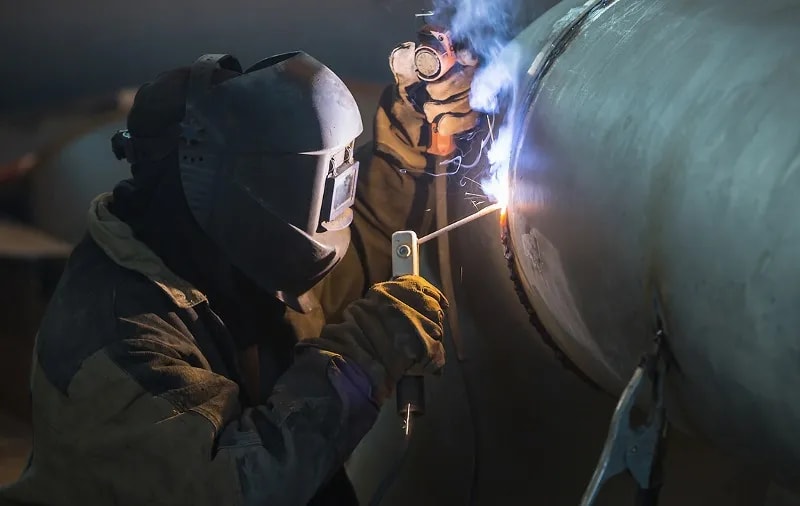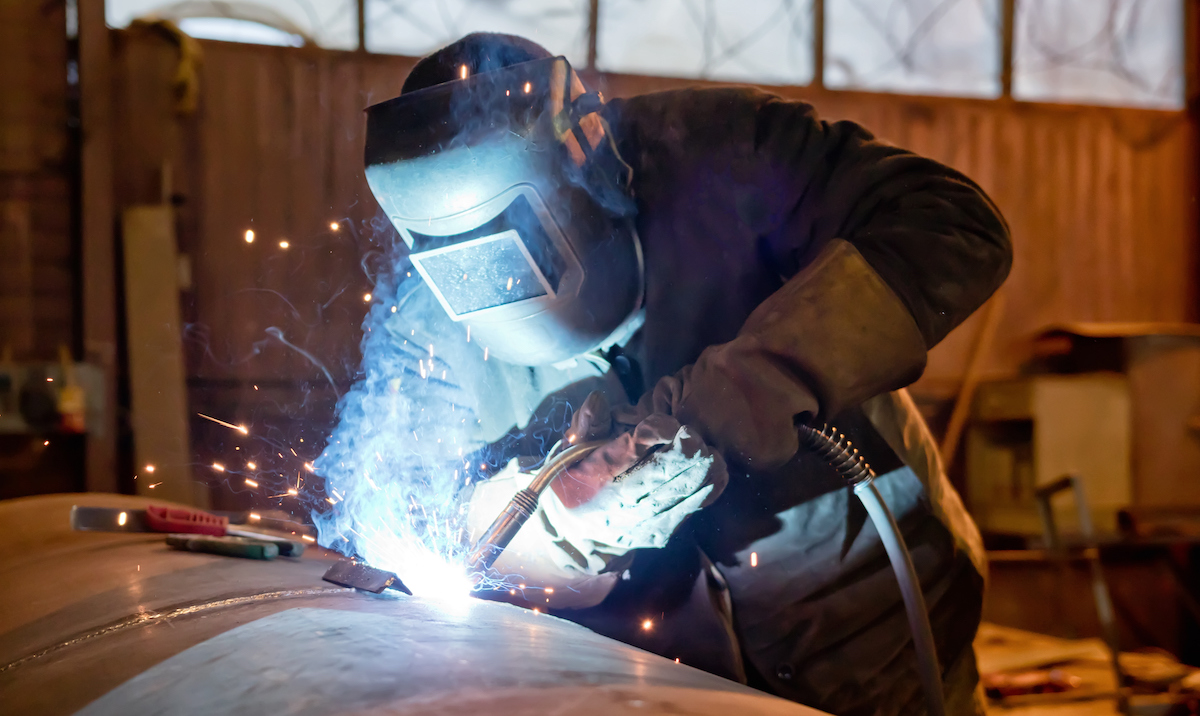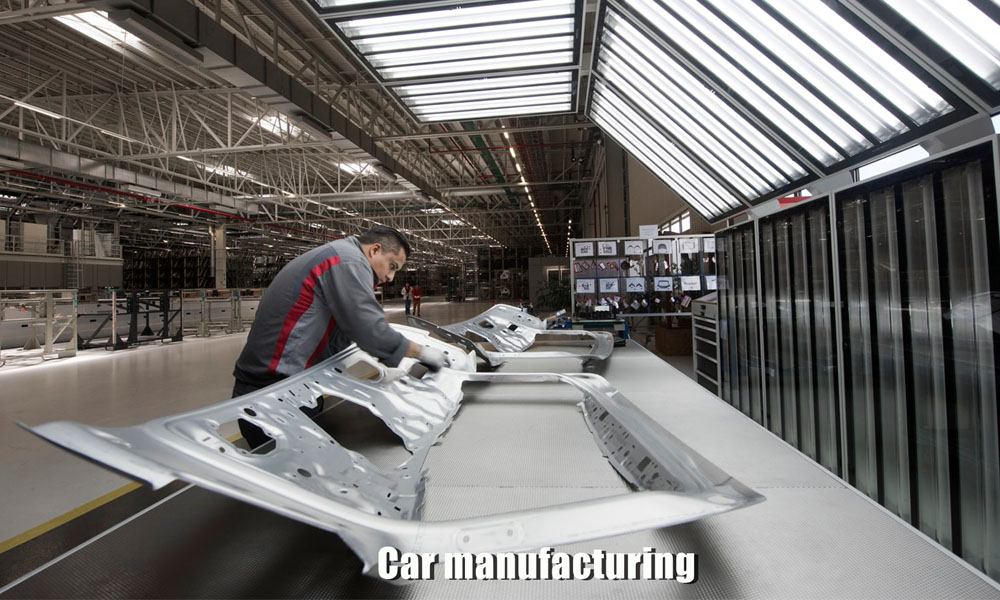Typical Welding Repair Service Issues and How to Address Them Properly
Welding repairs usually come across a variety of concerns that can endanger the honesty of the end product. Common problems consist of insufficient penetration, porosity, and misalignment, among others. Each defect offers unique difficulties that need particular techniques for resolution. Recognizing these problems is necessary for welders intending to boost their skills and end results. This discussion will discover these common welding repair work problems and reliable techniques to resolve them.
Poor Penetration
Insufficient penetration occurs when the weld steel fails to completely fuse with the base material, causing weak joints and potential architectural failures. This concern typically stems from not enough warm input, wrong electrode angle, or improper welding rate. Welders may experience poor infiltration because of a mistake of the essential parameters for a certain product density or type. Furthermore, contamination on the base product's surface area can impede effective bonding, intensifying the trouble. To attend to poor infiltration, welders should guarantee proper setups on their tools and maintain a clean job surface. Regular examination of welds is recommended to recognize any shortages early, permitting prompt corrections and the prevention of jeopardized architectural integrity in welded settings up.
Porosity
Porosity is an usual problem in bonded joints that manifests as small gas bubbles trapped within the weld metal. This issue can jeopardize the honesty of the weld, causing minimized strength and possible failing under tension. Fabrication. Porosity usually emerges from contamination, dampness, or improper welding techniques, which allow gases to escape right into the molten weld pool. To deal with porosity, welders must assure appropriate surface preparation, maintain a tidy functioning environment, and use appropriate welding specifications. Additionally, picking the best filler product and securing gas can mitigate gas entrapment. Regular examination and screening of welds can help identify porosity early, ensuring timely rehabilitative actions are taken, thereby protecting the top quality and integrity of the welded structure
Misalignment
Misalignment in welding can occur from numerous elements, consisting of inappropriate arrangement and thermal growth. Recognizing the source is vital for efficient resolution. Several correction techniques are readily available to straighten components and guarantee structural stability.
Causes of Imbalance
Welding misalignment often originates from a variety of underlying concerns that can jeopardize architectural honesty. One key cause is inappropriate fit-up of components before welding, which can result in spaces and unequal surface areas. Variants in thermal development throughout the welding procedure can also lead to distortion, specifically if the materials being joined have various coefficients of expansion. Additionally, poor securing and fixturing might fail to hold components safely in place, causing motion throughout welding. Poorly kept tools, consisting of welding machines and tools, might introduce inconsistencies in the weld bead, additional adding to imbalance. Operator error, stemming from not enough training or experience, can also play a significant role in producing misaligned welds.

Modification Methods Offered
Resolving misalignment successfully calls for a combination of restorative methods customized to the details concerns available. One common approach is using jigs or fixtures to hold parts in the right placement during welding, making sure constant positioning. Additionally, pre-heating the materials can help in reducing distortion and boost fit-up. For significant misalignment, mechanical adjustment techniques, such as making use of hydraulic jacks or clamps, can be used to fix the position prior to welding. Post-weld heat therapy might also be required to alleviate stress and anxieties triggered by imbalance. Lastly, careful assessment and adjustment during the configuration stage can prevent misalignment issues from ending up being considerable problems, advertising a smoother welding procedure and improving general architectural integrity.
Distortion
Distortion is a common difficulty in welding that can occur from various aspects, consisting of irregular cooling and heating. Comprehending the sources of distortion is crucial for carrying out effective avoidance methods. Addressing this problem not just enhances structural integrity yet also enhances the general top quality of the weld.
Root causes of Distortion
When based on the intense heat of welding, materials typically go through changes that can cause distortion. This phenomenon mostly develops from thermal growth and contraction during the welding process. As the weld location warms up, the material broadens; upon cooling, it gets, which can create interior anxieties. Additionally, irregular heating throughout a workpiece can exacerbate these stress and anxieties, leading to warping or bending. The type of product likewise plays a substantial role; metals with varying thermal conductivity and coefficients of development may react differently, causing resource unpredictable distortions. Inadequate joint style and insufficient fixturing can contribute to misalignment throughout welding, enhancing the chance of distortion. Understanding these causes is important for efficient welding repair service and avoidance approaches.
Avoidance Techniques
Effective prevention techniques for distortion during welding focus on regulating warmth input and guaranteeing correct joint design. Preserving a consistent warmth input assists to reduce thermal growth and tightening, which can result in distortion. Making use of strategies such as preheating the workpiece can additionally decrease the temperature slope, promoting consistent home heating. Furthermore, selecting proper joint designs, such as T-joints or lap joints, can boost stability and lower stress and anxiety concentrations. Applying proper fixturing to secure the work surfaces in position even more aids in preserving placement during the welding process. Ultimately, staggered welding sequences can distribute heat much more uniformly, avoiding local distortion. By applying these approaches, welders can greatly lower the likelihood of distortion and enhance the overall quality of their welds.
Cracking
Fracturing is an usual issue encountered in welding repair work, frequently arising from different factors such as inappropriate cooling rates, product selection, or insufficient joint preparation. The occurrence of fractures can substantially compromise the integrity of the weld, leading to possible failings during procedure. To address this issue, welders should initially assess the origin, making certain that materials work and properly selected for the details application. Furthermore, regulating the air conditioning price during the welding procedure is vital; fast air conditioning can generate tension and lead to fracturing. Appropriate joint design and prep work additionally contribute to decreasing the danger. Executing these methods can improve weld high quality and resilience, ultimately lowering the likelihood of breaking in completed weldments.

Incomplete Combination
A considerable issue in welding repair work is insufficient fusion, which happens when the weld metal does not effectively bond with the base material or previous weld passes - Belgrade Welding. This defect can bring about weak points in the joint, possibly compromising the integrity of the bonded framework. Factors adding to insufficient fusion consist of inadequate warmth input, improper welding technique, and contamination of the surfaces being joined. To address this issue successfully, welders must guarantee proper pre-weld cleaning and surface prep work, in addition to readjust their welding criteria to accomplish appropriate infiltration use this link and blend. Regular examination throughout the welding procedure can also aid identify insufficient fusion early, enabling for timely rehabilitative measures to boost the overall high quality of the weld
Overheating
While welding repair work can improve architectural integrity, overheating offers a significant challenge that can lead to material destruction. Extreme warm throughout welding can change the mechanical buildings of welding steel metals, leading to decreased stamina, increased brittleness, and warping. This sensation is especially vital in high-stress applications where structural dependability is vital. Recognizing overheating can involve visual assessments for staining or distortion, in addition to keeping track of temperature level during the welding procedure. To mitigate the risks related to getting too hot, welders need to employ appropriate strategies, such as managing warmth input, changing traveling rate, and using ideal filler products. In addition, implementing pre- and post-weld heat therapies can assist restore product residential or commercial properties and boost the general high quality of the repair service, making certain lasting performance and safety and security.
Regularly Asked Concerns
What Are the Typical Indicators of a Welding Issue?

How Can I Check My Welds for High quality?
To examine welds for quality, one can utilize aesthetic evaluations, ultrasonic screening, and radiographic techniques. Each method assures architectural honesty, determines issues, and verifies adherence to defined criteria, eventually enhancing the reliability of the bonded joints.
What Safety Safety Measures Should I Take While Welding?
When welding, one must focus on safety and security by using proper individual safety equipment, making sure appropriate ventilation, protecting flammable materials away, keeping a clean office, and understanding environments to avoid injuries and mishaps.
Can I Repair a Weld Without Remodeling the Entire Joint?
Fixing a weld without remodeling the entire joint is possible, depending on the damage (Montana Mobile Welding and Repair Fabrication). Methods such as grinding, adding filler product, or making use of a welding procedure can successfully address specific imperfections while maintaining the surrounding structure
What Equipment Are Necessary for Reliable Welding Services?
Crucial tools for reliable welding repair services consist of a welding device, cord brush, grinder, protective equipment, clamps, and filler materials. Each tool plays a vital function in guaranteeing top quality and safety and security throughout the repair process. Porosity typically occurs from contamination, wetness, or improper welding techniques, which permit gases to leave right into the liquified weld swimming pool. Poorly kept devices, consisting of welding makers and tools, might present inconsistencies in the weld grain, further adding to imbalance. When subjected to the extreme warm of welding, materials commonly undertake adjustments that can lead to distortion. Splitting is a common issue come across in welding repairs, commonly resulting from numerous variables such as inappropriate air conditioning rates, product choice, or inadequate joint prep work. A significant issue in welding repair work is insufficient combination, which occurs when the weld metal does not adequately bond with the base product or previous weld passes.